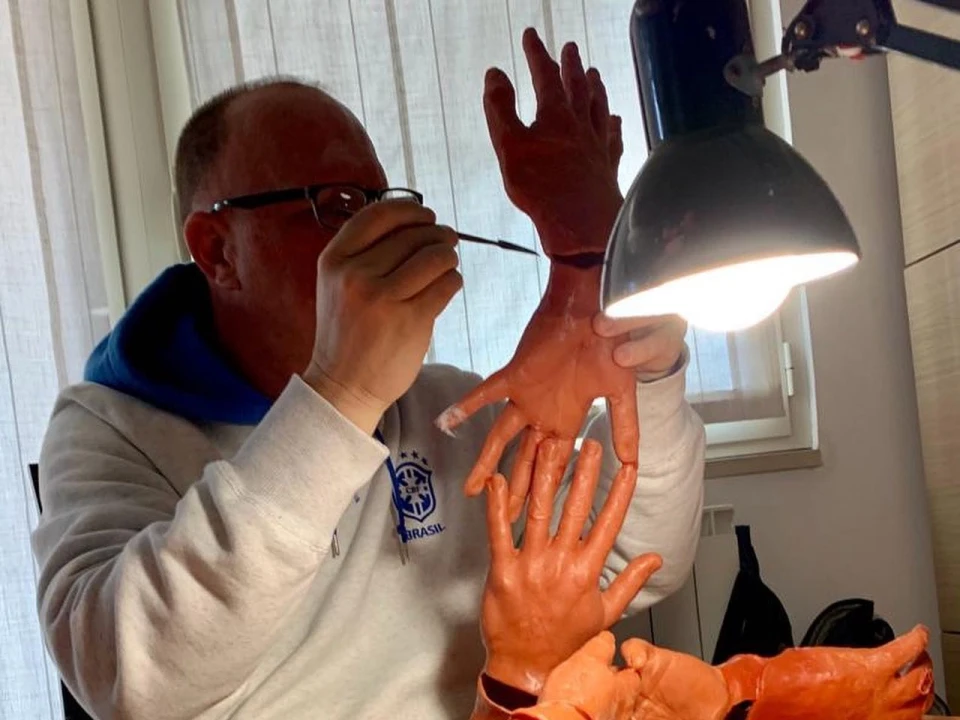Italian design, an extraordinary and distinctive tool of innovation, has deep roots in an ancient history of unique blending between Art and Craftsmanship. This prestigious tradition finds a significant and highly relevant expression today in the figure of Dante Mortet and his "Mano Artigiana" project.
Dante Mortet is the heir of a dynasty of artists and craftsmen with distant origins: the Mortet family moved to Italy from France in the mid-1800s. The Mortet workshop was founded in Florence by Aurelio Mortet, with some of his children taking up wood carving, while Armando and Dante specialized in the art of chiseling.
At the end of the century, the Mortets won a competition and moved to Rome: with the establishment of new ministries during the unification of Italy, the workshop was tasked with creating unique decorative objects for the Ministry of Finance. The 1929 crisis also hit the Mortet workshop, but the family persevered and continued their work from home.
After World War II, Aurelio and Virginio Mortet founded the current Mortet workshop, which has been located for nearly eighty years in the same magnificent place in Rome, on Via dei Portoghesi, at Palazzo Scapucci, better known as Palazzo della Scimmia.
In the 1970s and 1980s, Dante and his brother Andrea took over the running of the business, with Dante’s son, Lorenzo, already beginning to assist them.
Dante Mortet’s work has international resonance and develops in many directions, but his most significant and emblematic project is probably the one called "Mano Artigiana" (The Artisan’s Hand).
The project focuses on the reproduction and interpretation of the hands of famous people who have left or are leaving a mark on society.
The first hand reproduced by Dante was his father’s, followed by works dedicated to great figures such as, among others, Robert De Niro, Martin Scorsese, Ennio Morricone, Quentin Tarantino, Andrea Bocelli, Frankie Valli, and Dustin Hoffman.
In Dante's vision, the craftsman transforms material with his own hand, turning it into a dream for others: thanks to his technical skills, both ancient and modern, the craftsman creates the object and returns to the client their imagination, their thoughts, interpreting them and transforming them into emotion.
The Artisan’s Hand is a powerful symbol, capable of conveying artistic, social, and cultural messages with force and immediacy. A significant example is the sculpture created by Dante Mortet for the city of Latina, which represents the abused hands of migrant workers, invisible and indispensable laborers in the Agro Pontino. Here, the hand serves to redeem the history of these neglected workers, whose dignity has been trampled, humiliated, and underpaid.
Dante shares an especially intense and deep connection with the United States and the Italian American community. One of his most beautiful and captivating projects is titled "We Come from There," which involves the creation of a three-meter hand to be placed near the Brooklyn Bridge.
The sculpture will symbolize the hands of Italians who emigrated to the United States, hands that built, with sacrifice and passion, a better future for their families and the American community, while remaining strongly connected to their homeland.
Dante Mortet says with emotion: "It will be a tribute to Italians around the world, to the hands that worked silently to build a new identity without forgetting their roots. A tribute to all the Italians who have been a precious seed in a generous land.”
Dante is also the creator of the new special award from the NIAF (National Italian American Foundation): the Dea Roma, in gilded bronze with a Carrara marble base, inspired by the classical figure of Athena and replicated from the original placed at the center of the Altare della Patria.
But why is the Artisan’s Hand project so highly appreciated in America in general, and particularly in the United States? “Because it tells the story of the manual work of Italian-Americans, who are too often only associated with pizza, spaghetti, and the mafia. In reality, Italian-Americans are their hands; they represent a craftsmanship that brought artistic skills and craftsmanship to America, a generous seed that developed concrete and sustainable economies. Italians in America redeemed with their hands and craftsmanship the dignity of many emigrant families,” the artist proudly responds. Moreover, Dante adds: “The hand is Italy: it unites eyes, mind, and heart to create emotions.”
The parallel between the hand and Italy is a particularly fitting metaphor, which lends itself to being interpreted on a large scale. In Dante’s vision, the hand is not only the physical tool to perform one’s work but also represents the deepest essence and the truest emblem of the Italian style.
Saint Francis of Assisi once said: “Whoever works with his hands is a laborer. Whoever works with his hands and his head is a craftsman. Whoever works with his hands, his head, and his heart is an artist.”
Italian design, and Dante Mortet’s work, find their most distinctive signature precisely in this unique blending of hands, head, and heart, that is, Craftsmanship, Technique, and Art.




